- How to Propagate Monstera Guide: The Three Ways to Succeed - September 17, 2021
- Escargot Begonia: Why Is The Rex Begonia So Rare? - August 31, 2021
- Rieger Begonia: When You Can Expect The Hiemalis Begonia To Flourish - August 31, 2021
The name of this plant comes from its easy-going, easy-growing nature. The Friendship Plant is one of those tropical species that can grow quickly, almost too quickly even, but because of this, they make a nice gift for friends. They are also ideal for beginner gardeners who need a plant that will be kind to them as they learn and hone their gardening skills.
How to Identify Friendship Plant
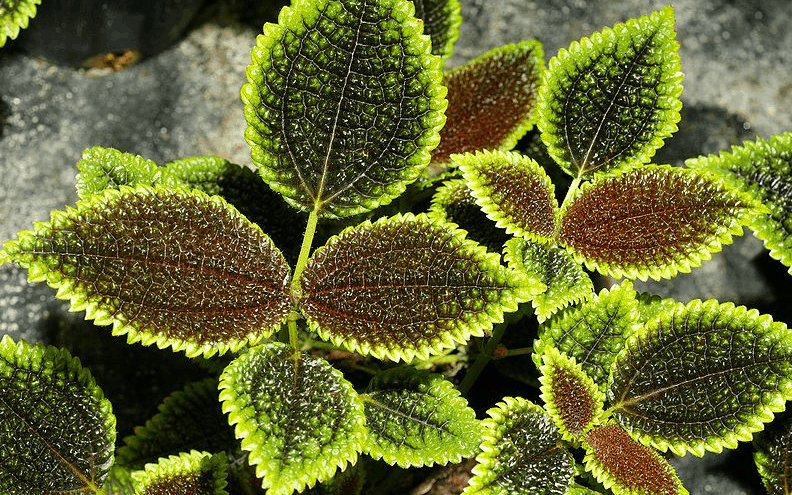
The key features of this plant are unique so it is easy to recognize. When identifying a Friendship Plant, look for these features:
- Leaves that are oval in shape
- Leaves with fuzz on their tops
- Leaves that have serrated edges
- Leaves that are corrugated on their tops
- Leaves that are colored burgundy or bronze in the center and green on the outside
- Leaves with undersides that are colored red or purple
How to Grow Friendship Plant from Seed
Friendship Plants that are grown indoors usually do not develop seeds since there are no insects to pollinate the flowers they produce. This makes this method a less common option to grow a new Friendship Plant. However, if you can gather some seeds, follow these steps to grow your own plant from the ground up.
- Purchase seeds from a reputable seller (sellers who price their seeds between $1 and $2)
- Soak the seeds in water for 24 to 48 hours
- Fill a seed starting tray or a small plant container with a seed starting soil mix
- Plant the seeds in the soil mix
- Water the soil so that it is moist but not soggy
- Place plastic wrap or the lid of the tray over the top of the container
- Set the container in a warm spot that gets plenty of bright, indirect sunlight
- Once sprouts appear above the soil level, acclimatize them to open-air
- Once the plants are established, move them to a more permanent plant container
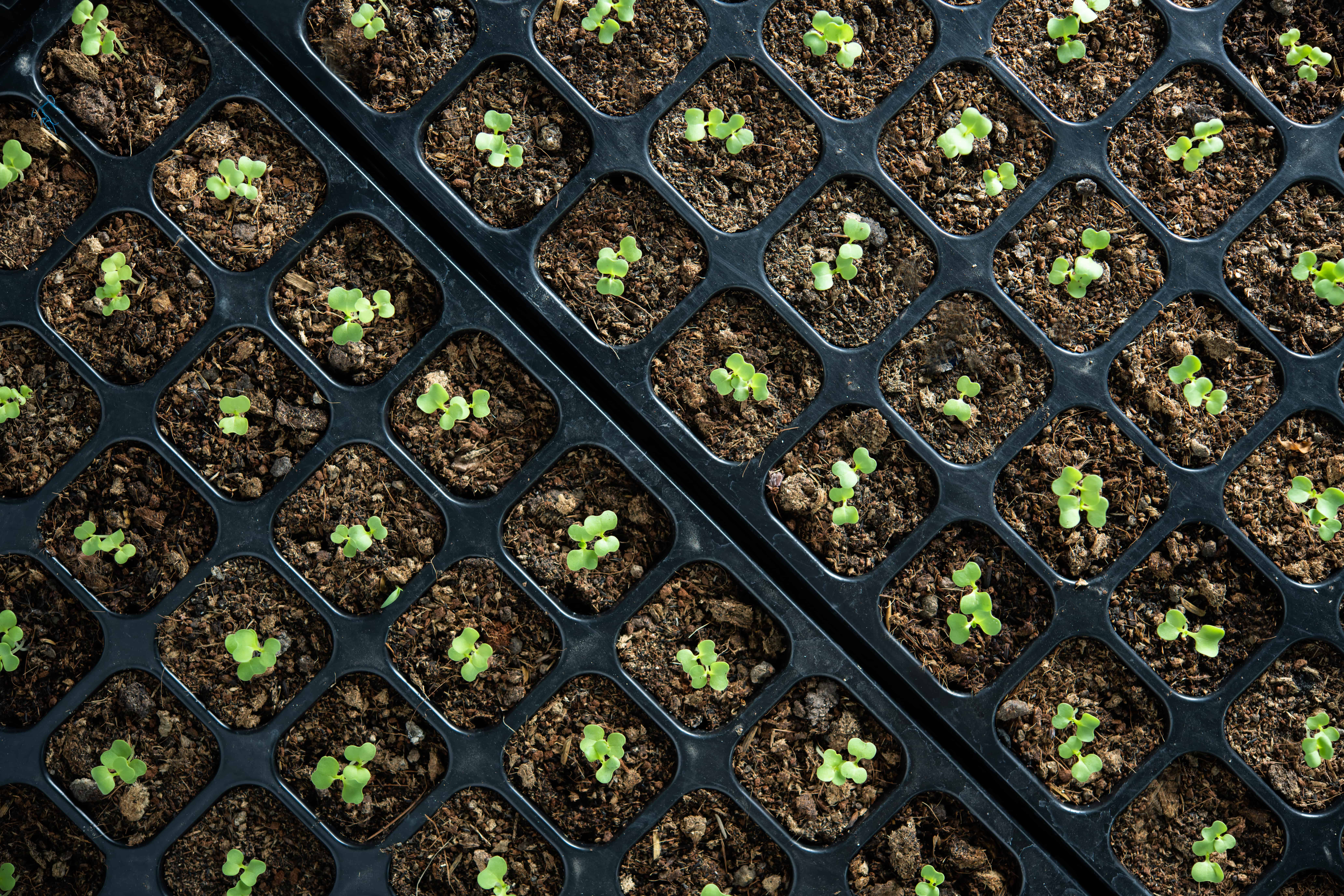
How to Propagate Friendship Plant
The best way to grow a new Friendship Plant is via stem cuttings. This process should be done during spring to reduce the chance of shock. The steps for doing this are as follows:
- Using a sterile cutting utensil, cut off a healthy 3-inch stem that includes at least two leaves
- Dip the bottom of the stem cutting in a rooting powder
- Plant the cutting in a container filled with a peat-based potting soil
- Water the potting soil and keep it moist but not soggy
- Set the container in a warm spot (at least 75 º F) that gets plenty of bright, indirect sunlight
- Care for as a regular Friendship Plant
Note: These plants will also reproduce themselves naturally through baby plants called pups.
Friendship Plant Growing Conditions
As a native of South and Central America, the Friendship Plant is a lover of all things warmth and humidity. It requires temperatures that range between 65 and 75 degrees Fahrenheit combined with humidity levels of at least 50%. To provide these temperatures and humidity levels, consider using the following equipment:
How to Plant Friendship Plant
This type of plant should not be repotted very often since it will struggle with shock from the move. If, however, your plant has stagnated in its growth, has roots extending from its container’s drainage holes, has been in the same potting soil for several years, or requires more water than normal, it is time to move the plant into a new home.
When this time comes, keep these things in mind:
- Transplant in the springtime to reduce the chance of shock
- Do not fertilize the plant after repotting it since can cause more harm than good
- Do not touch the root system since this can be damaged very easily
The steps for repotting a Friendship Plant are:
- Fill a new container that is one inch larger than its previous container with potting soil
- Create a hole in the soil for the plant to set inside
- Carefully remove the plant from its current container by laying the plant on its side and then pulling the pot off the root system
- Gently dust off any excess soil from its roots
- Set the plant into the hole in the new container
- Spread the soil around so that the plant is secure in its new container
- Water the plant
- Set it in a warm spot with indirect sunlight
Friendship Plant Potting & Soil
The most important thing to consider when selecting a potting soil for one of these plants is whether or not the soil drains well while still being able to retain a little moisture. Look for soil that includes a combination of peat moss or coco coir and perlite.
The following are some really great soil options to use with Pilea Glauca plants:
- All-Purpose Houseplant Potting Soil Mix
- Custom-Blend Organic Indoor Plant Potting Soil
- Simple Potting Soil for House Plants
- African Violet Potting Mix
Just getting the soil right will not prevent drainage issues for your plant. Remember, to get a plant container that can also drain off excess water.
Friendship Plant Water Requirements
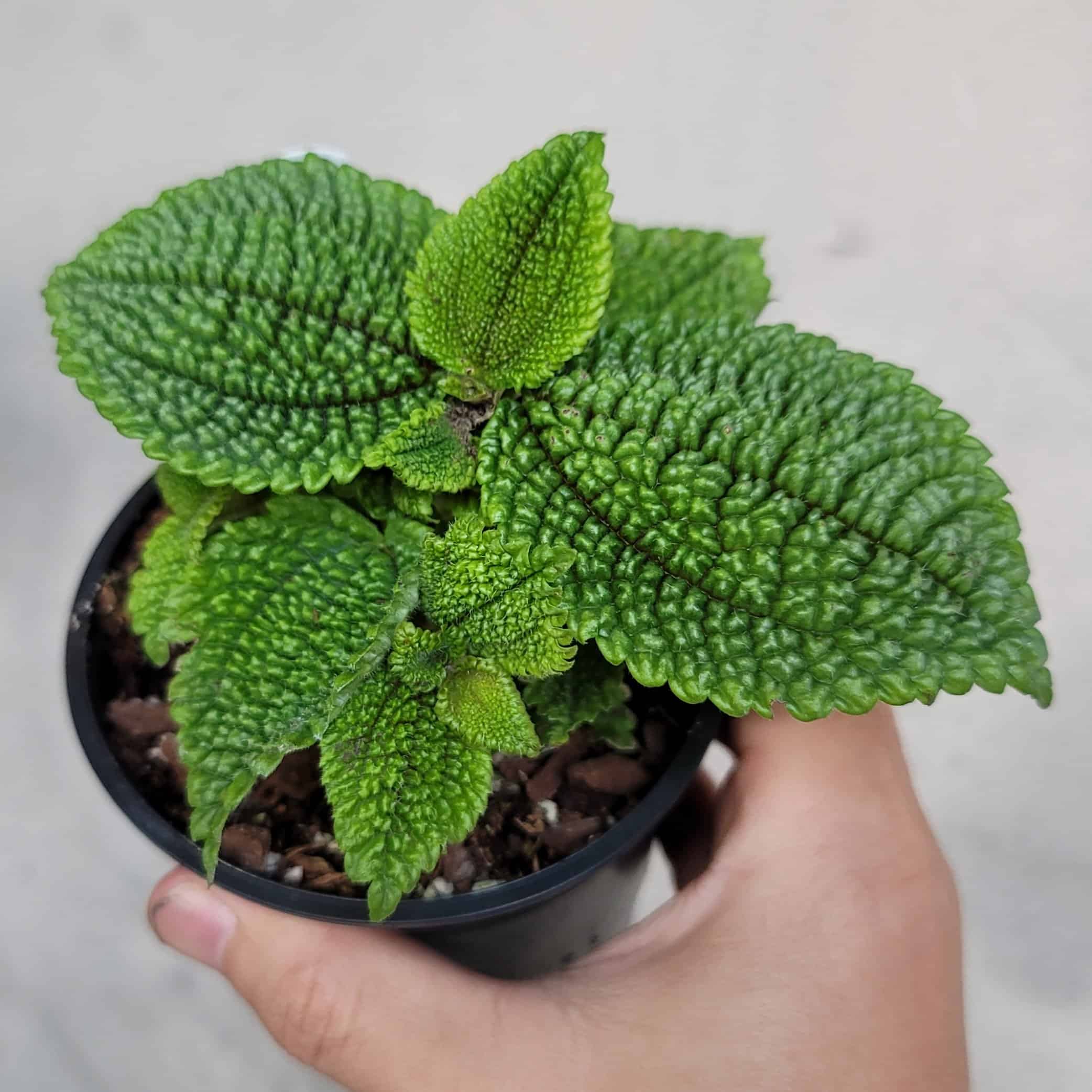
Overwatering this plant will increase the risk of root rot, which can eventually kill the plant. This is why it is important to always test the plant’s soil before watering it.
If the top inch of the soil is dry, then the plant can use a drink; however, if the soil is still moist, the plant does not need any more water. Different seasons of the year will require different amounts of water. Winter usually requires fewer watering sessions than either spring or summer.
When you do water the plant’s soil, be sure to water it evenly and thoroughly so that excess water flows from the container’s drainage holes. You can also water it in the soak and dry method, but be sure to allow the soil time to fully drain off excess water.
Take advantage of modern technology by using a plant watering app. This type of app can help track when a plant has been watered, set reminders to water it, and get answers to common plant care questions.
Friendship Plant Light Requirements
The best place to set these plants is in a spot that gets plenty of bright, indirect sunlight. They can grow in lowlight conditions, but they will not grow as colorful or as luscious. They can also be acclimated to more direct sunlight as long as they are shaded during the hottest parts of the day.
Test your indoor lighting situation with a light meter to ensure that your plant is receiving the amount of sunlight it needs.
Best Friendship Plant Fertilizer
Give your Friendship Plant plants a half or a quarter dose of balanced fertilizer once during springtime and once during mid-summer. There is no need to fertilize these plants during autumn or winter. Be sure to give this feeding after the plant has been watered.
Best Friendship Plant Companion Plantings
Provide your Friendship Plant with extra humidity by supplying it with several tropical plant companions. This could reduce the need for a humidifier or for misting your plants regularly. There are many options to consider as a companion plant for Friendship Plant and the following three are just a small sampling.
Pilea Glauca
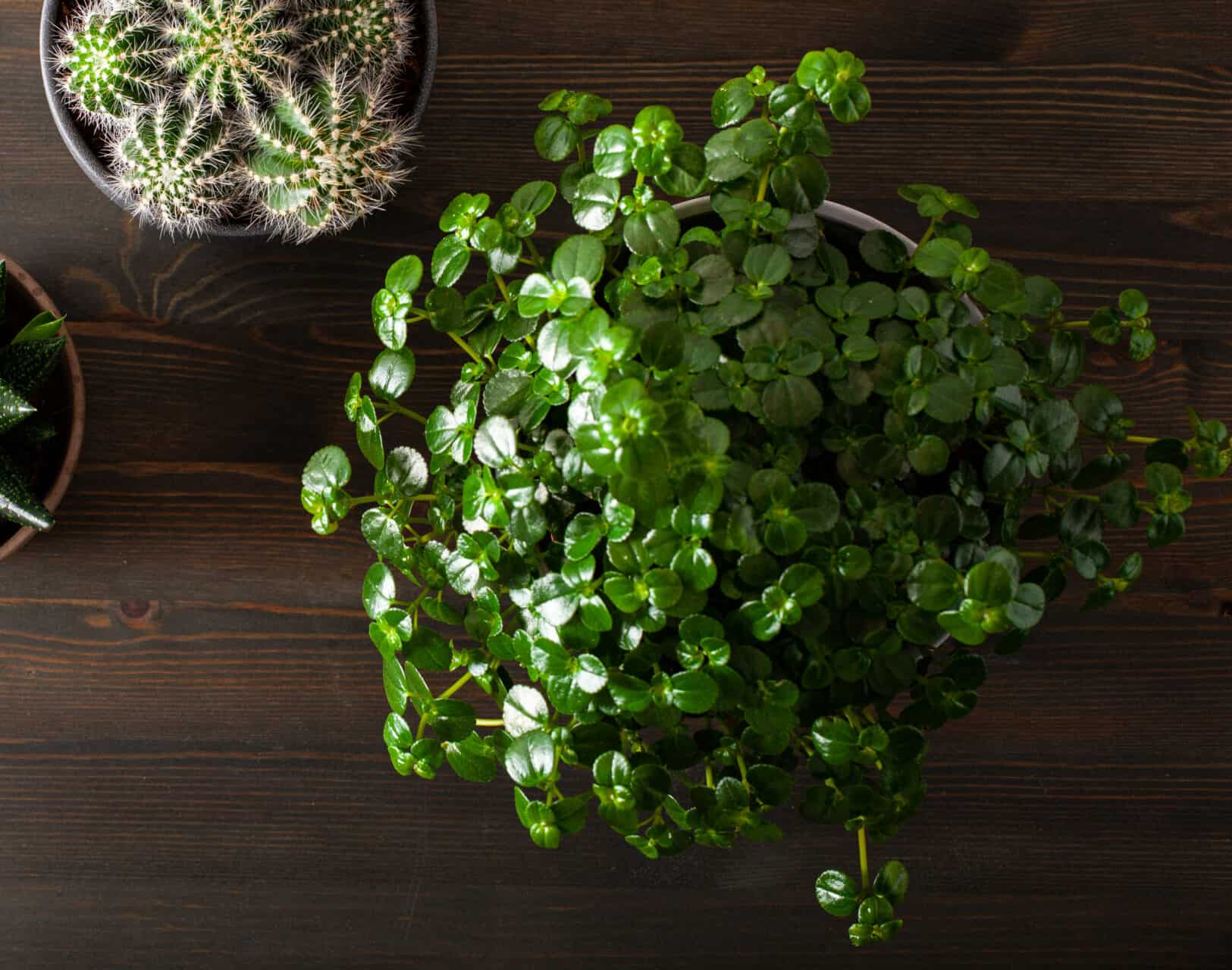
Why not pick another tropical plant that is in the same family? This means that care requirements will be easy and streamlined, plus, they will look stunning next to one another.
Pros:
- Pilea Glauca is not toxic
- Pilea Glauca is a cute and easygoing plant
- Pilea Glauca has care requirements that are similar to those of the Friendship Plant
Cons:
Pilea Glauca is sensitive to minerals in its water, and consequently, requires rainwater or distilled water rather than just tap water
Pilea Cadierei
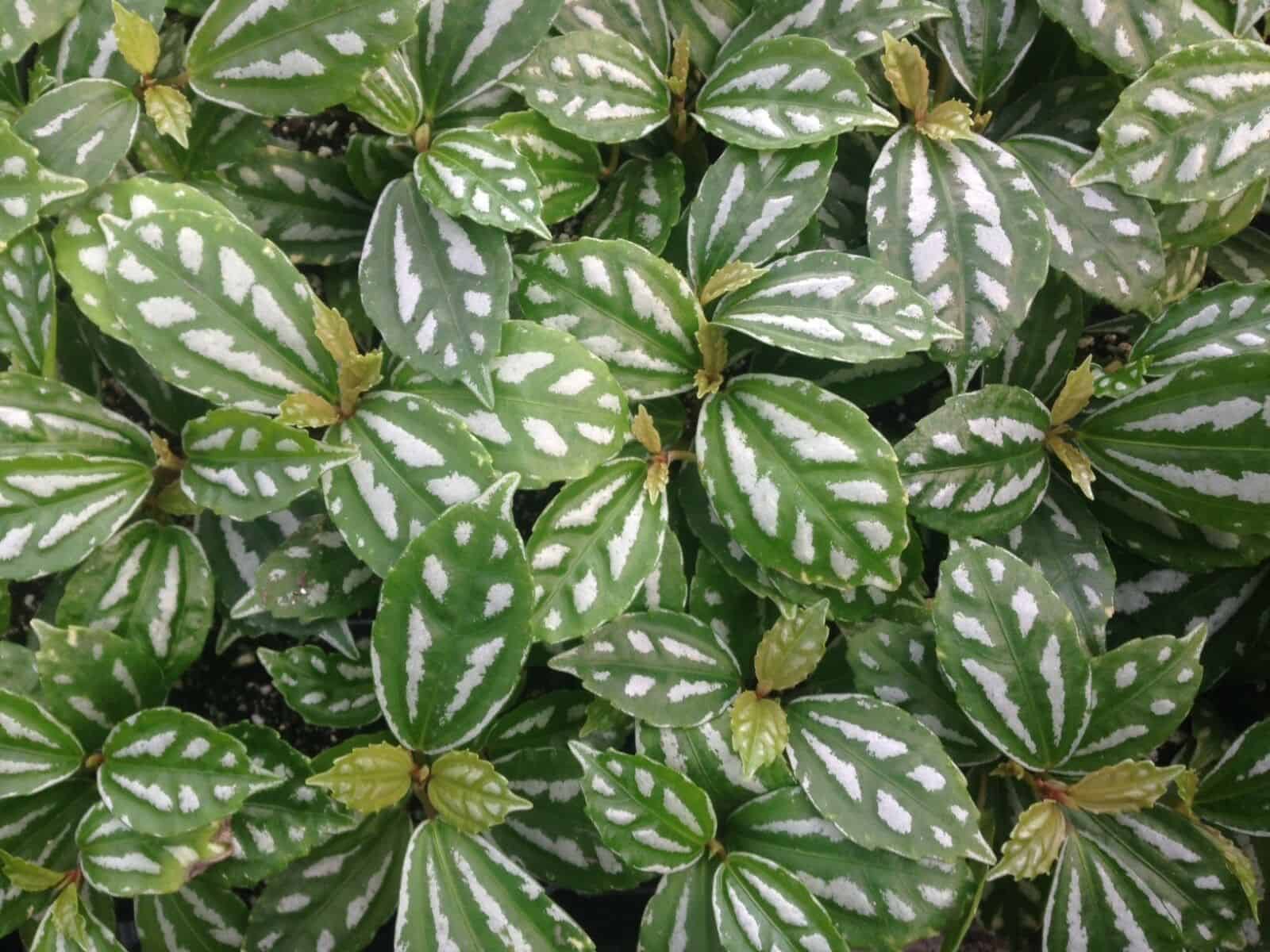
Known more commonly as the Aluminum Plant due to the silvery splotches on its leaves, this plant will be another ideal companion for your Friendship Plant.
Pros:
- Pilea Cadierei is in the same family as the Friendship Plant, and therefore, has similar care requirements to it
- Pilea Cadierei is a unique-looking plant
- Pilea Cadierei is easy to care for
Cons:
- Pilea Cadierei is toxic
- Pilea Cadierei requires frequent pruning
Jade Pothos
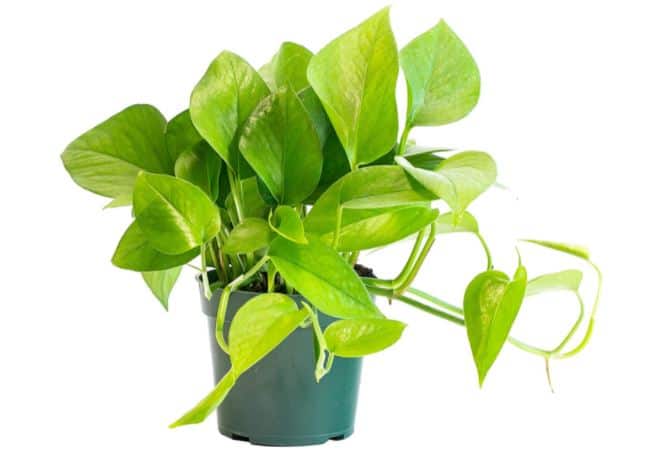
All varieties of Pothos plants are elegant and easygoing, but Jade Pothos delivers even more with its extraordinarily green-colored leaves. This tropical plant is well suited for sharing humidity and complementing the good looks of other plants, such as the Friendship Plant.
Pros:
- Jade Pothos is a beautiful plant
- Jade Pothos is very easy to care for
Cons:
- Jade Pothos is toxic
Friendship Plant Diseases and Common Problems
The most common issues faced by this plant are neither difficult to handle nor difficult to prevent. Take some time to learn the diseases and pests that frequently attack these plants and you will be well equipped to prevent them from an attack or treating them when they are attacked. Here are the most common issues faced by Friendship Plant:
Aphids
This type of infestation looks likes tiny insects that are shaped like teardrops. To deal with an infestation of aphids, follow these steps:
- Spray the plant with a mixture of neem oil and soapy water
- Wipe down the leaves of the plant
- Apply neem oil to the leaves to prevent another infestation
Leaves with Brown Spots
This could be a sign that the plant has been exposed to excessive amounts of direct sunlight, does not have access to enough humidity, or has been over-fertilized. It will be a process of elimination to determine what is causing the brown spots on its leaves.
- A plant that is exposed to a lot of direct sunlight should be moved to a shadier area.
- A plant that does not have enough humidity should be moved to a more humid area or given a humidifier.
An over-fertilized plant may need to have its soil saturated with water.
Mealybugs
Evidence of an infestation of mealybugs is small white spots that look like cotton on leaves and stems. To deal with an infestation of mealybugs, follow these steps:
- Spray a solution of alcohol and water on the leaves
- Rub the leaves with a cotton ball
- Coat the leaves in neem oil or insecticidal soap every few days
Root Rot
Evidence of this problem is leaves that have turned brown or black. To treat this problem, let the soil dry out completely and set the plant in a place where it will get plenty of airflows. If it is still struggling with too much water in its container, follow these steps:
- Remove the plant from its container
- Wash off all the dirt from its roots
- Cut off any rotten roots
- Replant the plant in a clean container with fresh soil
- Wait to water it for a few days
Spider Mites
This type of infestation looks like webbing spread over the plant’s leaves and stems. To deal with this type of infestation, follow these steps:
- Spray the plant with a mixture of 1 quart of warm water, 1 tsp. of dish soap, and 2 tsp. Of neem oil
- Wipe off the leaves and stems
- Repeat as necessary
Yellowed or Yellowing Leaves
This is a sign that the plant has been overwatered. If its water regimen is adjusted it should recover.
Friendship Plant Treatments and Maintenance
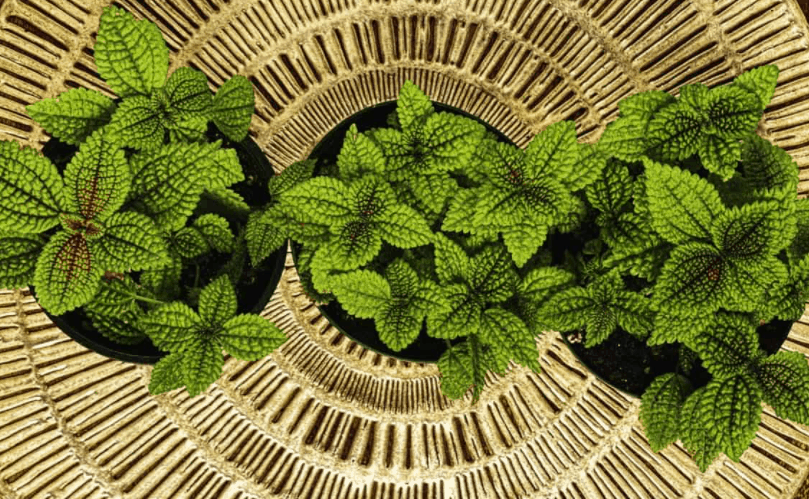
The best way to prevent harmful diseases and pest infestations is to provide the plant with regular care and cleaning. Here are a few tips to help keep your plant as healthy as it can be.
- Check it for signs of disease and infestations regularly, and treat them quickly.
- Clean the plant’s leaves regularly with neem oil.
- Learn how to properly water and feed your plant.
- Make sure your plant is set in an area with adequate amounts of sunlight, heat, and humidity.
- Mix diatomaceous earth into the soil of potted plants.
Where to Buy Friendship Plant Seeds Online
Seeds for this plant are difficult to find. When you search for seed sellers, look for those who have good ratings and price their seeds between $1 and $2 per seed. A few online shops that are a good place to begin your search are:
Where to Buy Mature Friendship Plant Online
These are popular houseplants and they are easy to find at many online shops. The following three shops are just a sample of the many reputable online sellers that have Friendship Plants ready for purchase:
FAQs
Question: Is the Friendship Plant Toxic?
Answer: No, this plant is happily non-toxic.
Question: Which USDA Hardiness Zone Can Friendship Plant be Planted In?
Answer: This plant is highly sensitive to frost and cold weather and should not be planted outside in any zones lower than 11b. If you live in a zone that is lower than this, the Friendship Plant should be planted in a container that can be transferred indoors during cold weather.
Question: How Large Will a Friendship Plant Grow?
Answer: These are rather small and compact plants that can reach up to a foot tall. If they are pruned well, they can be formed into a bush-like shape rather than a vining plant.
In Conclusion
Friendship Plant is another tropical plant that every beginner gardener or busy gardener will love. They are beautiful, easy to grow, and great for gift-giving. Why not get yourself and a few friends a plant today?

